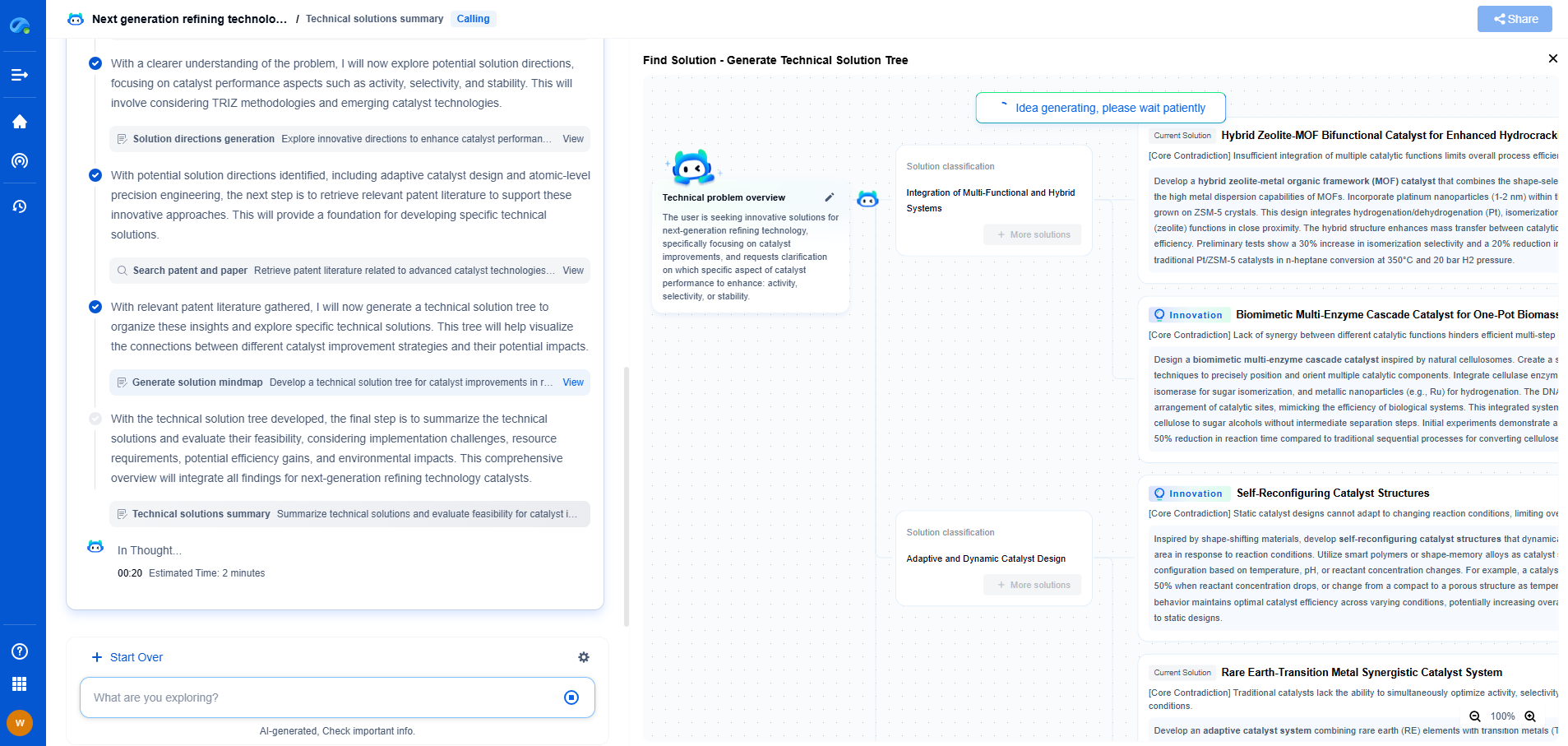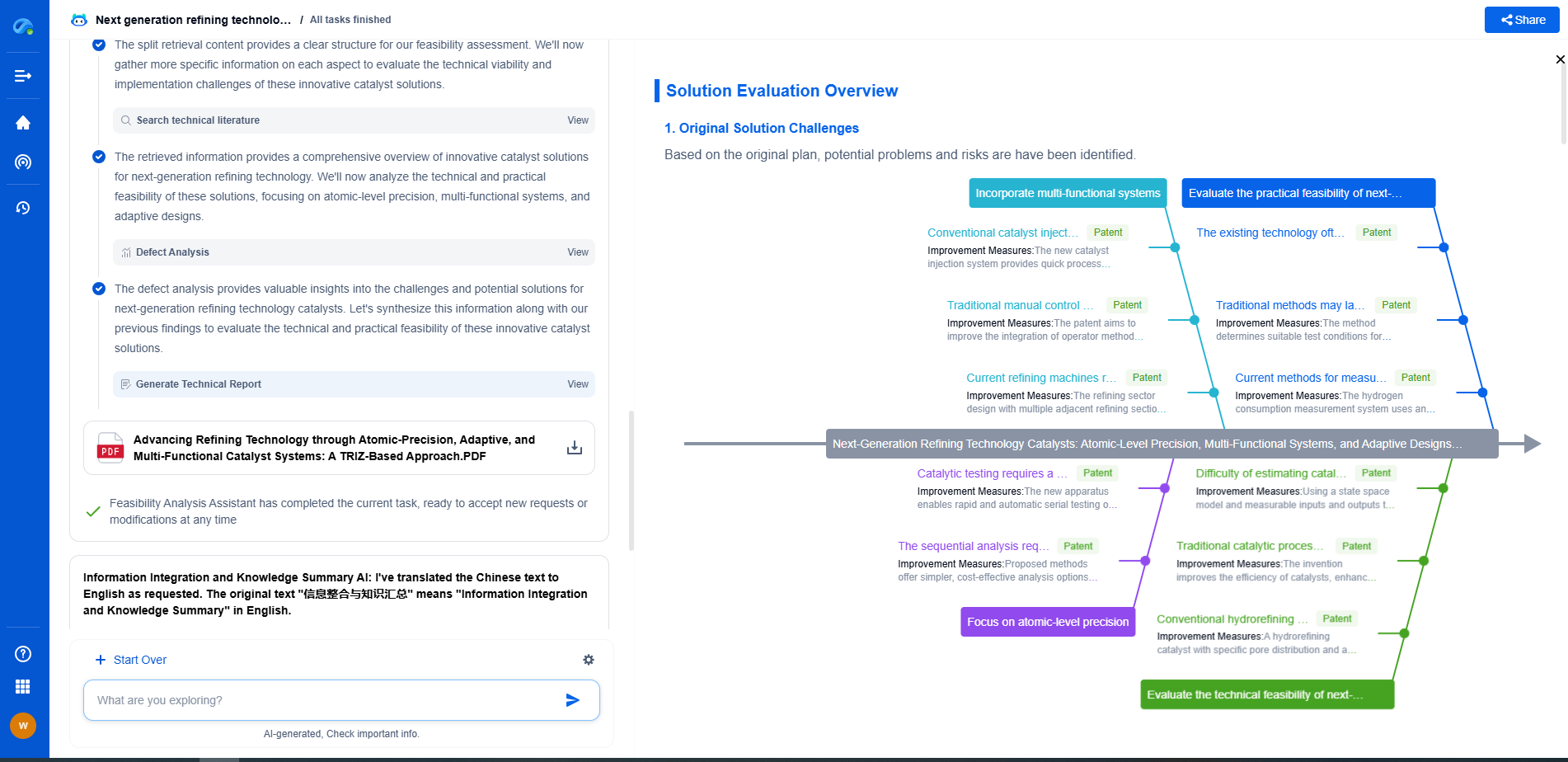Microphones for SPL Measurement: Condenser vs. MEMS vs. Piezoelectric
JUL 16, 2025 |
Sound Pressure Level (SPL) measurement is a critical aspect of various fields, including audio engineering, noise monitoring, and environmental studies. Accurate SPL measurements are essential for assessing sound quality, ensuring compliance with noise regulations, and designing sound systems. At the heart of SPL measurement is the microphone, a device that converts sound waves into electrical signals. In this blog, we will explore three types of microphones commonly used for SPL measurement: condenser, MEMS, and piezoelectric microphones. We will compare their functionalities, benefits, and limitations to help you make an informed decision.
Condenser Microphones
Condenser microphones are a popular choice for SPL measurement due to their high sensitivity and wide frequency response. These microphones work on the principle of capacitance change. They typically consist of a thin diaphragm placed close to a metal backplate, forming a capacitor. When sound waves hit the diaphragm, it moves, causing changes in the capacitance, which are then converted into an electrical signal.
Advantages:
- **Sensitivity and Accuracy**: Condenser microphones are highly sensitive, capable of detecting even subtle variations in sound pressure levels, making them ideal for precise measurements.
- **Frequency Response**: They offer a broad frequency response, capturing sounds across a wide range of frequencies.
Disadvantages:
- **Fragility**: The delicate construction of condenser microphones makes them more susceptible to physical damage and environmental influences such as humidity and temperature changes.
- **Power Requirement**: They require an external power source, often phantom power, which can add complexity and cost to measurement setups.
MEMS Microphones
Microelectromechanical Systems (MEMS) microphones are a newer technology that has gained popularity in recent years. These microphones integrate mechanical and electrical components at a microscopic scale on a single chip. MEMS microphones use a capacitive sensing element similar to condenser microphones, but they are manufactured using semiconductor technology.
Advantages:
- **Durability and Reliability**: MEMS microphones are robust and resistant to environmental factors, making them suitable for outdoor and industrial applications.
- **Compact Size**: Their small size allows for easy integration into various devices and systems, providing flexibility in design and deployment.
Disadvantages:
- **Limited Dynamic Range**: MEMS microphones may have a narrower dynamic range compared to condenser microphones, potentially affecting their performance in environments with extremely high or low SPLs.
- **Calibration**: They may require more frequent calibration to maintain accuracy over time.
Piezoelectric Microphones
Piezoelectric microphones operate based on the piezoelectric effect, where certain materials generate an electrical charge in response to mechanical stress. In these microphones, sound waves cause a diaphragm to apply pressure to a piezoelectric material, resulting in an electrical signal.
Advantages:
- **Simplicity and Ruggedness**: Piezoelectric microphones are inherently simple in design and can withstand rough handling and harsh environments.
- **No Power Requirement**: They do not require an external power source, making them more straightforward to use in portable and low-power applications.
Disadvantages:
- **Frequency Response**: Piezoelectric microphones may have limited frequency response, which can be a disadvantage in applications requiring detailed sound analysis.
- **Sensitivity**: They may not match the sensitivity levels of condenser or MEMS microphones, potentially limiting their use in certain precision applications.
Choosing the Right Microphone
Selecting the right microphone for SPL measurement depends on the specific requirements of your application. Consider the following factors:
- **Sensitivity and Accuracy**: If precise measurements are crucial and environmental conditions are controlled, condenser microphones may be the best choice.
- **Durability and Cost**: For applications in demanding environments or with budget constraints, MEMS or piezoelectric microphones could be more suitable.
- **Frequency Response and Dynamic Range**: Evaluate the range of frequencies you need to measure accurately and the expected variation in SPL levels.
Conclusion
Each type of microphone—condenser, MEMS, and piezoelectric—offers unique advantages and faces specific limitations. Understanding the characteristics of these microphones will help you select the most appropriate one for your SPL measurement needs. Whether you prioritize sensitivity, durability, or simplicity, there's a microphone that can meet your requirements, ensuring accurate and reliable sound pressure level measurements in any setting.
In the world of vibration damping, structural health monitoring, and acoustic noise suppression, staying ahead requires more than intuition—it demands constant awareness of material innovations, sensor architectures, and IP trends across mechanical, automotive, aerospace, and building acoustics.
Patsnap Eureka, our intelligent AI assistant built for R&D professionals in high-tech sectors, empowers you with real-time expert-level analysis, technology roadmap exploration, and strategic mapping of core patents—all within a seamless, user-friendly interface.
⚙️ Bring Eureka into your vibration intelligence workflow—and reduce guesswork in your R&D pipeline. Start your free experience today.
- R&D
- Intellectual Property
- Life Sciences
- Materials
- Tech Scout
- Unparalleled Data Quality
- Higher Quality Content
- 60% Fewer Hallucinations
Browse by: Latest US Patents, China's latest patents, Technical Efficacy Thesaurus, Application Domain, Technology Topic, Popular Technical Reports.
© 2025 PatSnap. All rights reserved.Legal|Privacy policy|Modern Slavery Act Transparency Statement|Sitemap|About US| Contact US: help@patsnap.com

